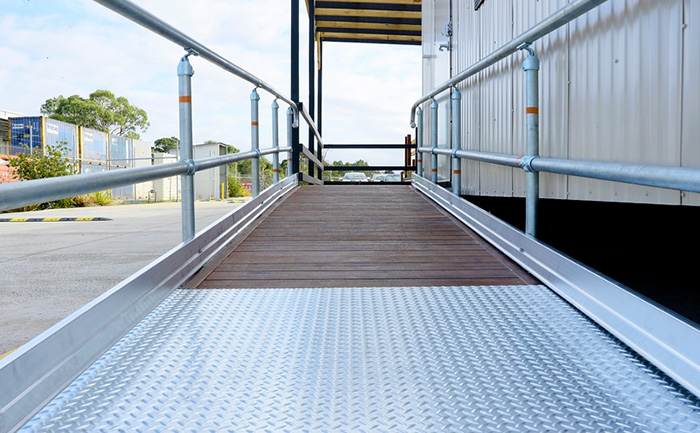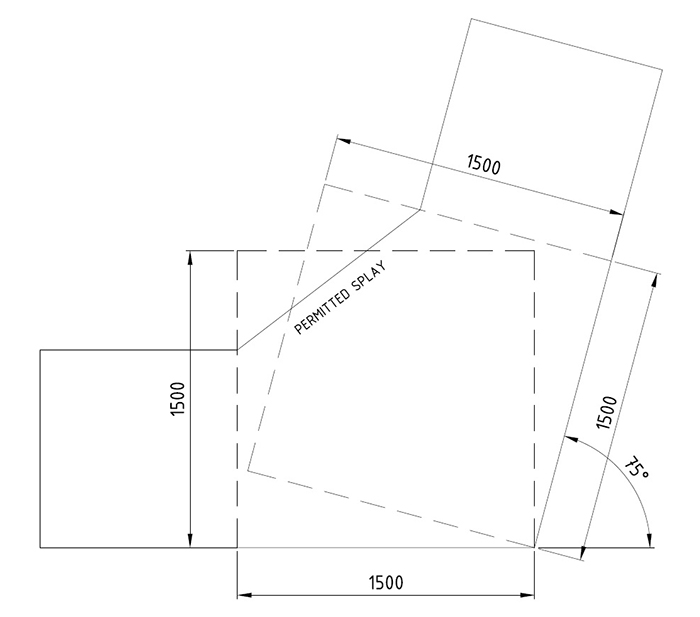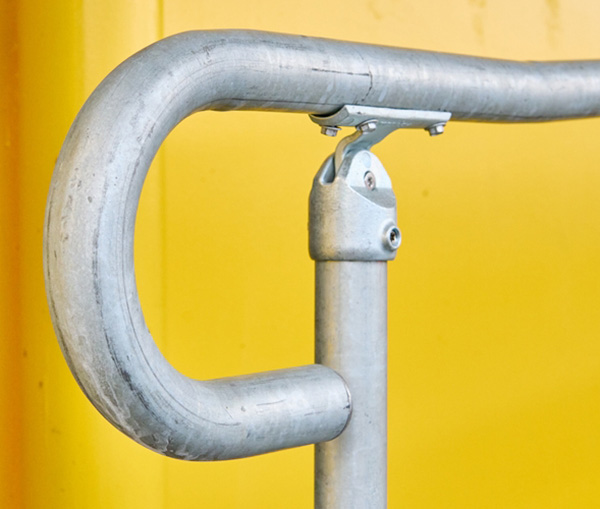In the realm of architecture, where form meets function under the critical eye of safety and regulations, the creation of accessible spaces is a mandate as society becomes more inclusive. The launch of the Ezibilt ramp, stair and walkway system serves as a testament to our commitment to inclusivity, offering a reliable tool to weave accessibility seamlessly into building and space designs.
The Australian Standards of AS1428.1-2021 set forth a blueprint for mobility, specifically delineating the spatial needs for wheelchair circulation – a criterion paramount to the fabric of inclusive design. As we delve into these standards, let’s demystify the technicalities and translate them into practical knowledge that can elevate architectural practices.
Design considerations for ramps and stairs
Creating accessible ramps and stairs is not just about meeting regulatory requirements; it’s about ensuring that individuals of all abilities can navigate a space with dignity and ease. Here, we’ll explore some critical design considerations to keep in mind when incorporating ramps and stairs into your architectural projects.
Landings and their importance in accessibility
Landings serve as critical elements in both ramp and stair design. These flat, level platforms allow users to rest, change direction, or transition between different paths. When designing landings, consider the following:
Size matters: Ensure that landings are of sufficient size to accommodate wheelchair users comfortably. As per AS1428.1-2021, landings at the top and bottom of ramps should be at least 1500mm long. For stairs, landings should be as wide as the stairs themselves.
Clear pathways: Keep landings free of obstructions. Wheelchair users, in particular, need a clear, unobstructed path to navigate safely.
Turning space: Allow adequate space for wheelchair users to make turns.
Visual contrast: Consider using visual contrast on landings to aid individuals with visual impairments. This can be achieved through variations in flooring materials or colour.

Optimal sizes for landings and circulation paths
In addition to the specific dimensions outlined in AS1428.1-2021, architects should strive for optimal sizes in ramp and stair design to ensure a user-friendly experience:
Gradient considerations: When designing ramps, aim for gradients that are at the shallower end of the allowable range. A less steep incline is easier for users to traverse, especially for those with mobility devices. A gradient of 1:14 is standard.
Visibility: Ensure that ramps and stairs are well-lit and visually distinct. Adequate lighting and visual cues aid users with different abilities in navigating the space confidently.
Universal design: Strive for universal design principles that cater to a broad spectrum of users. Consider features such as tactile indicators for those with visual impairments and slip-resistant surfaces for everyone’s safety.
Practical application of standards in design
Now that we’ve explored the essential design considerations, let’s delve into the practical application of AS1428.1-2021 in your architectural projects.
AS1428.1-2021 provides specific guidelines for the design of turns along accessible pathways. These guidelines ensure that wheelchair users can navigate turns smoothly without encountering obstacles or excessive effort. Here’s how to apply the 60° to 90° turn requirements effectively:
Understanding turn angles: The standard specifies that turns should have an angle between 60° and 90°. This range allows for easy manoeuvrability while preventing overly tight turns that may be challenging for wheelchair users.

Design with space: To accommodate these turn angles, plan your pathways with ample space. Ensure that corners and intersections are designed with curves or gradual angles to meet the requirements. Additionally, consider adequate space that is clear of any door swing with ramps leading to an entry/exit.
Clear obstructions: Keep pathways free from obstructions such as furniture or decorative elements that could hinder turning. Users should have a clear, unobstructed path at all times. Ensure the ramp landing area at the top is not too close to stairs as this may be used as a turning point for wheelchair users.
Consider transitions: When designing transitions between different floor surfaces, such as from a corridor to a room, ensure that the change in level is gradual and compliant with the standard’s requirements.
Considering the protrusions of handrails and balustrades
Handrails and balustrades are essential safety features, but their design should not impede accessibility. AS1428.1-2021 includes provisions to minimise protrusions that could create hazards for users:
Protrusion limits: The standard specifies limits on how much handrails and balustrades can protrude into circulation spaces. These limits are in place to prevent accidents, especially for those with visual impairments.
Selecting appropriate components: Choose handrail and balustrade components that meet the standards and have minimal protrusions. Rounded or streamlined designs are often more user-friendly in this regard.

Clear visual indicators: Use visual indicators to highlight the presence of handrails and balustrades. Contrasting colours or materials can make these safety features more noticeable to users.
By considering these guidelines and implementing them in your architectural designs, you can ensure that handrails and balustrades enhance safety without compromising accessibility.
Conclusion
The quest for accessibility in architecture is not merely a legal requirement but a commitment to creating spaces that embrace the diversity of human abilities. When it comes to accessibility solutions, ramp and stair design is a critical design component. Not only must these structures meet safety requirements, but they must also be durable and compliant with building codes and regulations to ensure a safe and secure space for all users. If poorly thought out, there could be serious emotional and financial cost associated with injury, permanent disability, or death should this design element be overlooked.
Products such as the Ezibilt ramp, stair and walkway system serve as invaluable allies, simplifying the process of compliance and enhancing safety. By embracing these tools and the principles of inclusive design, we can build a more inclusive and accessible world.

